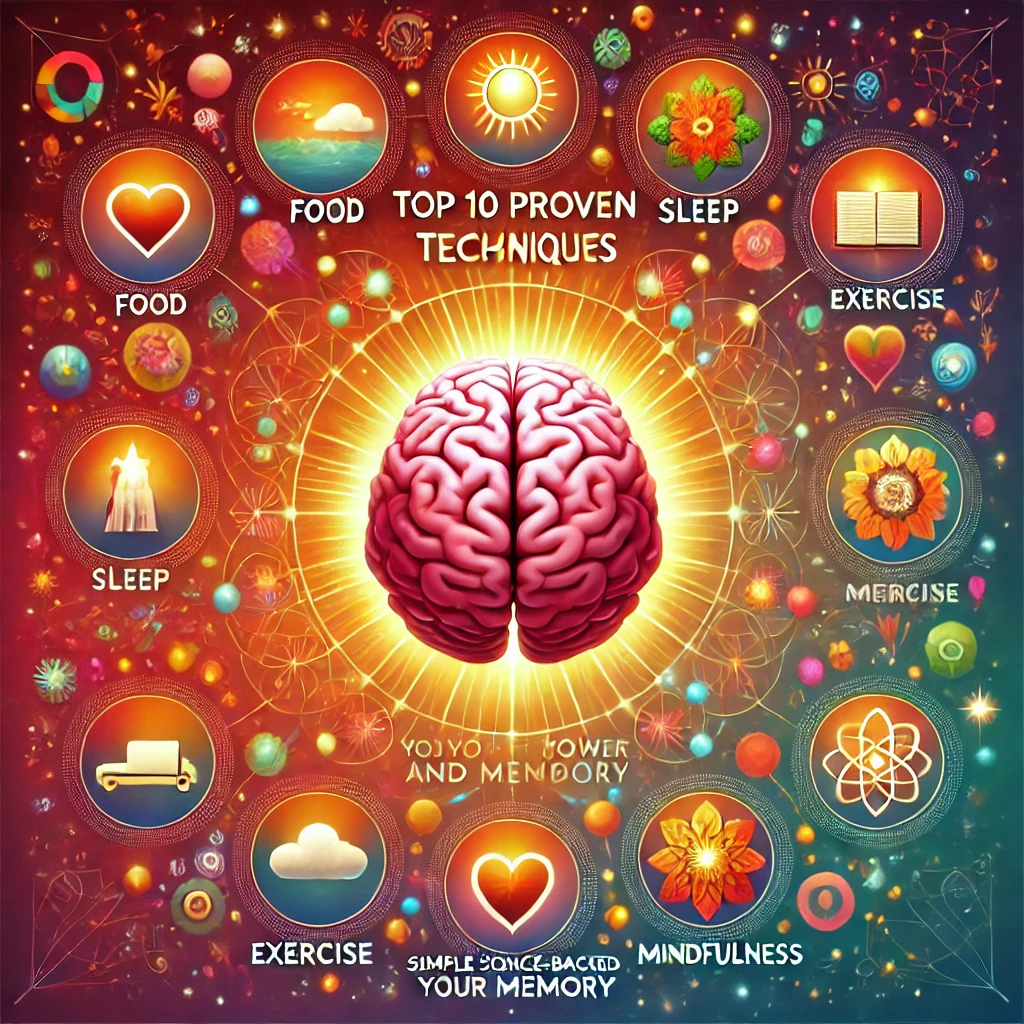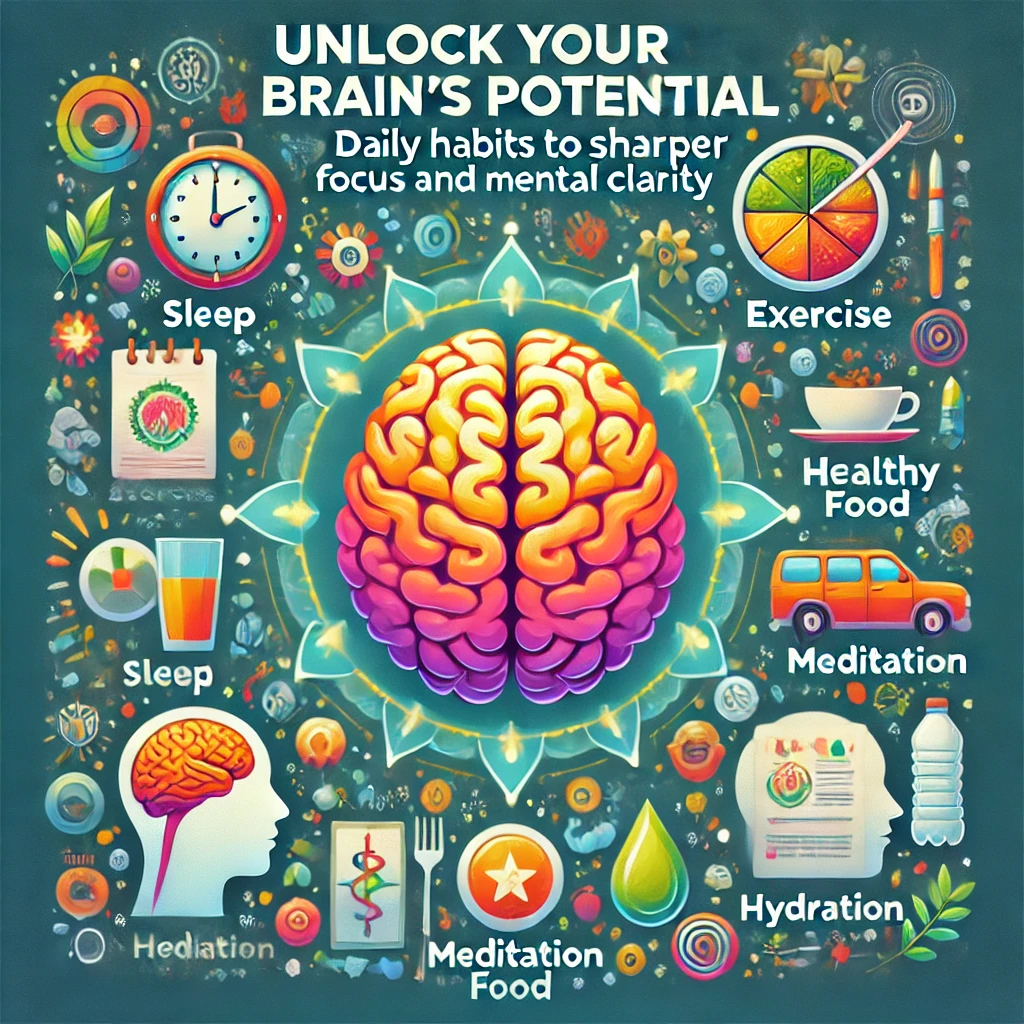Introduction
In today’s busy world, staying focused and mentally sharp can feel like a never-ending challenge. Many of us juggle work, family, and personal goals, and our minds are constantly pulled in different directions. Fortunately, mindfulness and meditation offer powerful ways to enhance focus and boost brain power naturally. From quick mental clarity exercises to deeper meditative practices, these techniques can improve cognitive function, reduce stress, and strengthen mental resilience.
In this guide, we’ll dive into practical, science-backed techniques for increasing focus and brain power through mindfulness and meditation. Whether you’re new to these practices or a seasoned pro, you’ll find actionable steps to incorporate into your daily routine for long-term mental strength.
1. Start with Focused Breathing for Instant Clarity
One of the simplest yet most effective mindfulness techniques for focus is focused breathing. This exercise can be done anywhere and is an excellent way to reset your mind, boost mental clarity, and reduce stress. Focused breathing helps calm your nervous system, making it easier to concentrate and stay mentally present.
Relatable anecdote:
When I’m feeling overwhelmed, I take five minutes to practice focused breathing. Closing my eyes and focusing on each inhale and exhale helps me feel grounded and ready to tackle my tasks with a clear mind.
How to practice focused breathing:
- Find a quiet place, sit comfortably, and close your eyes.
- Breathe in deeply through your nose for a count of four, hold for four, and exhale slowly through your mouth for a count of four.
- Repeat this cycle for a few minutes, gradually increasing the count as you get more comfortable.
2. Practice Body Scan Meditation for Full-Body Awareness
Body scan meditation is a mindfulness technique that involves mentally scanning your body from head to toe, noting any areas of tension or discomfort. This technique helps increase focus and concentration by bringing your awareness to the present moment and fostering a sense of relaxation.
Benefits of body scan meditation:
- It’s a great way to release physical tension, which often hinders mental focus.
- Body scan meditation improves cognitive function by encouraging a deep state of relaxation, which supports brain health.
- Practicing this technique regularly can increase your awareness and enhance your mind-body connection.
Example:
I tried a body scan meditation on a day when I felt particularly stressed. Starting from my toes and moving up, I noticed tension in places I hadn’t realized, like my shoulders and jaw. By the end of the exercise, I felt both physically and mentally lighter.
How to practice body scan meditation:
- Lie down or sit comfortably, close your eyes, and take a few deep breaths.
- Start at the top of your head and slowly move down through each body part, releasing tension as you go.
- Focus on each part of your body, moving slowly until you reach your toes. This can take anywhere from 5-20 minutes.
3. Use Guided Visualization to Boost Focus and Brain Power
Guided visualization is a powerful meditation for brain power that involves imagining positive or calming scenes, which helps the brain relax and focus better. Visualization can also serve as a mental rehearsal, enhancing confidence and clarity before important tasks or events.
Why visualization works:
- Visualization activates areas in the brain associated with focus and goal-setting, which can increase your focus and concentration.
- It engages the senses, making it easier for the mind to “stay” in the present and avoid wandering.
- Guided visualization is particularly helpful for enhancing mental clarity through meditation, as it gives the mind a structured focus.
Relatable anecdote:
Before an important presentation, I used guided visualization to mentally walk through the steps. Picturing myself succeeding helped me feel more focused and calm, which made all the difference in my performance.
How to practice guided visualization:
- Close your eyes and visualize a calming place, like a beach or forest, focusing on the sounds, smells, and sensations.
- Alternatively, visualize a successful outcome for a task, imagining each step in detail.
- Practice for 5-10 minutes daily, or before any task requiring high focus and confidence.
4. Try “Five Senses” Mindfulness for Instant Focus
The “Five Senses” technique is a quick mindfulness exercise for brain health that involves focusing on each of your senses in the present moment. This exercise is great for boosting mental clarity and bringing your mind back to the present, especially when distractions are high.
Example:
When I find myself losing focus at work, I take a quick “five senses” break. I look around my space, take note of any sounds, feel the texture of my desk, and even take a deep breath to notice any smells. It’s amazing how much this simple exercise improves my concentration.
How to do the “Five Senses” mindfulness exercise:
- Look around and note five things you can see, four things you can feel, three things you can hear, two things you can smell, and one thing you can taste.
- Spend a few moments on each sense, engaging fully with what’s around you.
- Use this exercise whenever you need a quick reset to increase focus and mental clarity.
5. Practice Loving-Kindness Meditation for Mental Strength
Loving-kindness meditation is a mindfulness practice that involves directing positive thoughts and feelings toward yourself and others. This meditation for brain power helps build mental resilience, compassion, and calm, which can indirectly improve focus and cognitive function by reducing stress and fostering positivity.
Why loving-kindness meditation is effective:
- It promotes mental strength by reducing negative emotions and boosting positivity.
- Practicing compassion can reduce stress, freeing up mental resources for focus and concentration.
- Studies show that people who practice loving-kindness meditation have greater mental clarity and improved cognitive function.
Relatable anecdote:
I tried loving-kindness meditation during a stressful week, and it really helped me feel more centered and connected. Taking a moment to wish myself and others well was a powerful way to lift my mood and regain focus.
How to practice loving-kindness meditation:
- Close your eyes, breathe deeply, and repeat phrases like “May I be happy, may I be healthy, may I be peaceful.”
- Then, direct these wishes toward others, starting with loved ones and extending to all beings.
- Practice for 5-10 minutes daily or as needed.
6. Use Daily Journaling to Enhance Focus and Mental Clarity
Journaling is a mindfulness technique that supports mental clarity through meditation and reflection. Writing down your thoughts, goals, or worries each day can help declutter your mind, making it easier to stay focused and calm.
Benefits of journaling for brain health:
- Writing helps organize your thoughts and identify patterns, improving self-awareness and focus.
- Journaling serves as a “brain dump,” reducing cognitive load and clearing space for new ideas.
- It encourages mental clarity and can be used to track personal growth and mindfulness progress.
Example:
I began journaling each morning, jotting down whatever came to mind. Over time, I noticed that I felt more focused and grounded throughout the day. Journaling became my go-to technique for increasing focus naturally.
How to get started with journaling:
- Set aside 5-10 minutes each morning or evening to write freely about your thoughts, feelings, or goals.
- Use prompts if you’re unsure where to start, such as “What am I grateful for today?” or “What is on my mind right now?”
- Revisit your entries periodically to track your progress and reflect on growth.
7. Incorporate Movement Meditation for Enhanced Brain Power
Movement meditation combines physical activity with mindfulness, creating a connection between body and mind. This technique is a great way to boost mental clarity and focus, especially for those who find it hard to sit still during traditional meditation.
Examples of movement meditation:
- Walking meditation: Walk slowly and mindfully, paying attention to each step, the sensations in your feet, and your surroundings.
- Yoga: Practicing yoga can help improve focus and brain power by increasing awareness of the breath and body.
- Tai Chi: This ancient practice combines slow, deliberate movements with deep breathing, enhancing cognitive function and reducing stress.
Relatable anecdote:
I started practicing yoga as a way to exercise, but I quickly realized how much it helped me focus. The mindful movement and breathwork brought a new level of mental clarity that I hadn’t experienced before.
How to try movement meditation:
- Start with a 10-15 minute walking meditation, paying attention to each step and how your body feels.
- If you prefer yoga or Tai Chi, find a beginner’s class or online video to guide you through the movements.
- Focus on your breathing and bodily sensations, bringing your attention back whenever your mind wanders.
Conclusion
Increasing focus and brain power doesn’t require drastic lifestyle changes or hours of practice. By incorporating these mindfulness and meditation techniques, you can enhance your cognitive function naturally, improve focus, and build mental resilience over time.
The key is consistency. Start small with a technique that resonates with you, and gradually add more to your routine. Whether it’s a quick “five senses” exercise during a busy day, a relaxing body scan meditation before bed, or guided visualization for mental clarity, each step brings you closer to a sharper, more focused mind.
FAQ Section
1. How can meditation improve brain power?
Meditation helps reduce stress, increase focus, and enhance mental clarity, all of which contribute to improved cognitive function and brain power.
2. What are the best mindfulness techniques for focus?
Techniques like focused breathing, body scan meditation, and the “five senses” exercise are effective for boosting focus and staying present.
3. How long does it take to see results from meditation for brain health?
With consistent practice, many people notice improvements in focus and clarity within a few weeks. Long-term benefits grow with ongoing practice.
4. Can guided visualization really increase concentration?
Yes, visualization helps focus the mind and builds confidence, making it easier to stay concentrated on tasks.
5. Is yoga effective for mental clarity?
Yes, yoga combines movement with mindfulness, helping to increase focus, reduce stress, and boost brain power naturally.
6. How can journaling improve cognitive function?
Journaling helps declutter the mind, organize thoughts, and increase self-awareness, supporting mental clarity and focus.
7. What is the difference between mindfulness and meditation?
Meditation is a focused practice, often involving sitting still, while mindfulness is about staying present and aware in daily activities.
8. How does movement meditation benefit the brain?
Movement meditation like walking meditation, yoga, and Tai Chi combines physical movement with mindful awareness, enhancing focus, mental clarity, and cognitive function.
9. How often should I practice mindfulness for focus?
Daily practice, even for a few minutes, can yield the best results for maintaining focus and mental strength over time.



